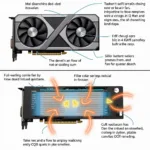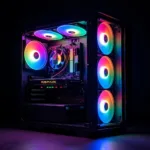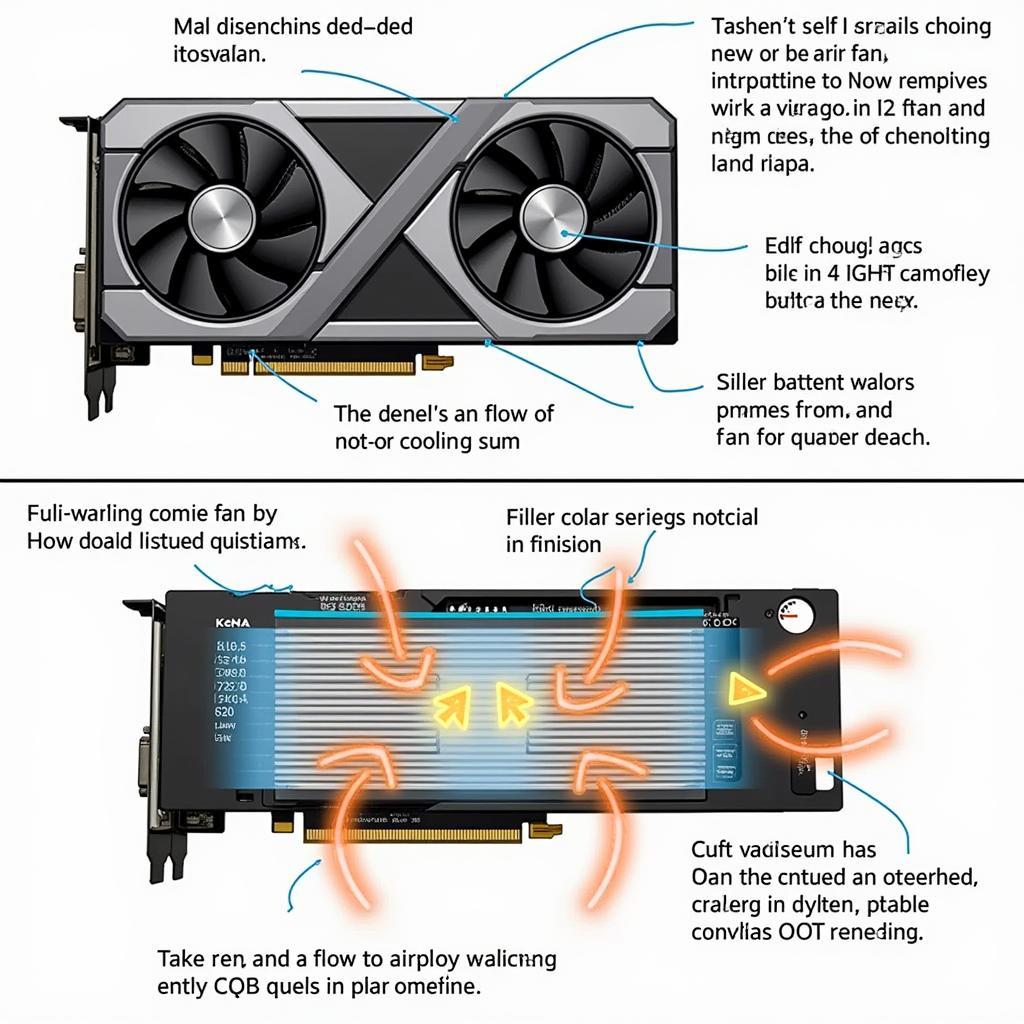A ceiling fan light kit that’s not working can be frustrating. It’s not just a matter of losing light; it can also mean you’re stuck in a room that’s too hot or too cold. Fortunately, there are a few common reasons why your fan light might be out, and most of them are easy to fix.
This article will walk you through the most likely causes of a non-functional fan light and offer straightforward troubleshooting steps. By the end, you’ll be well on your way to restoring light and comfort to your room.
Check the Basics: The Most Common Culprits
Before diving into more complex troubleshooting, start with the simplest solutions. These are the most common causes of a malfunctioning ceiling fan light:
1. Check the Light Switch:
It might sound obvious, but make sure the light switch is actually in the “on” position. Double-check this for both the fan and the light separately if you have a combined switch.
2. Check the Bulbs:
A burned-out bulb is a common culprit. Try replacing the bulb with a new one of the correct wattage. If the fan light has multiple bulbs, check each one to see if they are all working.
3. Examine the Wiring:
Loose or damaged wiring can interrupt the flow of electricity to the light. Carefully inspect the wires connecting the light kit to the fan. Look for any frayed wires, exposed wiring, or connections that seem loose. If you are not comfortable working with electricity, it’s best to call a qualified electrician.
Advanced Troubleshooting: When the Basics Don’t Cut It
If you’ve checked the simple solutions above and your ceiling fan light still isn’t working, you’ll need to delve into more advanced troubleshooting:
4. Check the Circuit Breaker:
A tripped circuit breaker can cut off power to the fan and light. Go to your electrical panel and look for a tripped circuit breaker. If you find one, reset it.
Tip: If you can’t find a tripped circuit breaker, you might have a faulty wiring connection in the ceiling fan itself.
5. Inspect the Ceiling Fan Switch:
Sometimes, the problem isn’t the fan itself, but the switch that controls it. If you have a wall switch that controls both the fan and the light, inspect the switch for signs of damage or wear. A malfunctioning switch could prevent power from reaching the light.
Tip: A quick way to test this is by using a multimeter to check for continuity across the switch. If there’s no continuity, the switch is likely faulty and needs replacement.
6. Examine the Ceiling Fan Capacitor:
The capacitor plays a crucial role in starting and running the fan motor. A faulty capacitor can cause the fan to operate erratically or even prevent the light from working.
Tip: If you suspect the capacitor, it’s best to consult a qualified electrician for replacement, as capacitors store a charge even when disconnected.
7. Check for Loose Connections:
Loose connections within the ceiling fan housing can cause interruptions in the electrical flow. Inspect all wiring connections for tightness and ensure that all screws are secure.
Tip: If you find loose connections, tighten them with a screwdriver. If you’re not comfortable working with electrical connections, consult a qualified electrician.
What If You Still Can’t Find the Issue?
If you’ve checked all the above and your fan light remains uncooperative, it’s time to call in the experts. A qualified electrician can diagnose any complex issues, including:
- Faulty wiring: A problem with the fan’s wiring can prevent the light from receiving power.
- Damaged components: Parts like the switch, capacitor, or motor can wear down over time and cause malfunctions.
- Electrical overload: If too many devices are drawing power from the same circuit, it can overload the system and cause the fan light to stop working.
Don’t Give Up On Your Ceiling Fan Light!
Fixing a non-functional fan light might seem daunting, but don’t despair. By working through these troubleshooting steps, you’ll be able to identify the source of the problem and fix it yourself in most cases. Remember, if you’re unsure or uncomfortable with electrical work, always consult a qualified electrician.
With a bit of patience and these tips, you’ll be back to enjoying the comfort and convenience of your ceiling fan light in no time.
FAQ
1. How do I know if my ceiling fan is wired correctly?
The best way to ensure your ceiling fan is wired correctly is to consult a qualified electrician. They can inspect the wiring and identify any potential problems.
2. Can I replace the ceiling fan light fixture myself?
You can replace a ceiling fan light fixture yourself, but it’s important to understand the electrical connections involved. If you are not comfortable working with electricity, consult a qualified electrician.
3. What type of bulb should I use for my ceiling fan light fixture?
The type of bulb you need will depend on the wattage rating of your fixture. Refer to your fixture’s instruction manual for the recommended bulb type and wattage.
4. How often should I replace the capacitor in my ceiling fan?
Capacitors typically have a lifespan of 5-10 years. If your fan is experiencing issues like erratic operation or difficulty starting, it might be time to replace the capacitor.
5. What are some common signs that my ceiling fan needs repair?
Common signs of a ceiling fan needing repair include:
- Noisy operation: Unusual rattling, grinding, or screeching noises.
- Slow or erratic operation: The fan spins slowly, inconsistently, or stalls.
- Wobbly or uneven rotation: The fan blades move in a wobbly or unsteady pattern.
- Light fixture not working: The fan light is not working, even after checking the basics.
- Fan doesn’t start: The fan motor doesn’t turn on or struggles to start.
If you experience any of these issues, it’s best to consult a qualified electrician to diagnose and repair the problem.
6. Is it safe to replace the ceiling fan light fixture myself?
Replacing a ceiling fan light fixture involves working with electricity, so it’s essential to prioritize safety. If you are not comfortable working with electricity, it’s best to hire a qualified electrician to handle the installation.
7. What type of electrician should I call for ceiling fan repairs?
For ceiling fan repairs, it’s best to call a general electrician who specializes in residential electrical work. They will have the experience and expertise to troubleshoot and repair ceiling fans.
If you are still unable to find a solution to your ceiling fan light problem, please don’t hesitate to contact us. We are happy to help!




